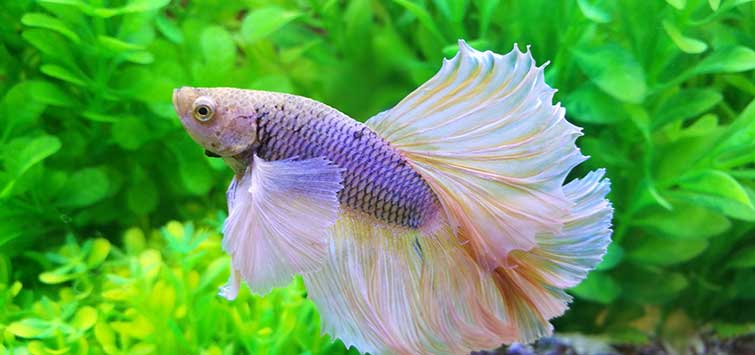Recognizing Betta Fish Actions: What Every Proprietor Needs To Know
Recognizing Betta Fish Actions: What Every Proprietor Needs To Know
Blog Article
Just How to Breed Betta Fish Successfully: Specialist Methods and Insights for Hobbyists Wanting To Increase Their Betta Collection
Reproducing Betta fish requires a nuanced understanding of genes and environmental problems, making it necessary for hobbyists to come close to the process with both persistance and care. Creating an optimum reproduction environment, picking the ideal pairs, and observing the details of their courtship habits are foundational actions that can substantially impact the end result. The subsequent care of the fry is important for guaranteeing their healthy growth. As we check out these vital elements, it ends up being clear that effective breeding is not almost the preliminary pairing but encompasses a wider technique that values cautious factor to consider.
Recognizing Betta Fish Genes
Recognizing the genes of Betta fish is crucial for successful breeding, as it influences traits such as color, fin shape, and behavior. Betta fish display a varied selection of colors and patterns, mainly established by their genetic makeup.
Along with pigmentation, fin morphology is an additional substantial facet of Betta genes (betta fish). The sizes and shape of fins are influenced by various genes, including those that figure out whether the fins are brief, long, or veil-shaped. Comprehending these hereditary variants aids dog breeders predict the phenotypic results of their children
Additionally, behavior qualities such as aggression and territoriality can likewise be influenced by genetics. These habits play a crucial function in the breeding process, as they can affect spawning success and the general character of the resulting fry. By thoroughly comprehending these genetic concepts, breeders can make enlightened choices, ultimately boosting their breeding programs and attaining desirable outcomes.
Preparing the Reproduction Environment
Developing an optimal reproduction environment is crucial for the successful recreation of Betta fish. The first step in preparing this setting is to select an ideal breeding storage tank, preferably ranging from 5 to 10 gallons. This dimension permits adequate swimming room and the establishment of areas. The storage tank should be furnished with a heating system to preserve a secure temperature between 78 ° F and 80 ° F, which is crucial for motivating generating behavior.
Next, take into consideration making use of a sponge filter or an air rock to give gentle water blood circulation without producing solid currents that can emphasize the fish. It is important to mount plants or breeding cones to use concealing spots and advertise convenience for the female throughout the spawning procedure. Floating plants, such as Java moss or water sprite, can likewise create a much more natural surroundings while facilitating bubble nest building by the male.
Prior to presenting the breeding sets, guarantee the water is conditioned and devoid of hazardous chemicals, such as chlorine or heavy steels. betta fish. Regular water changes should be performed to maintain optimum water quality, improving the chances of successful reproduction. With these prep work in area, the reproducing environment will sustain the health and health of both Betta fish
Choosing Breeding Pairs
Selecting the right breeding pairs is essential for accomplishing effective Betta fish recreation. When selecting your reproduction pairs, consider several vital aspects including health, temperament, and genes. Healthy Betta fish exhibit vivid shades, clear eyes, and active behavior. Picking fish that are devoid of illness ensures a far better possibility of producing sensible children.
Character is another vital consideration, as Betta fish are recognized for their aggressive nature. It is advisable to choose a male and woman that exhibit suitable temperaments to decrease tension throughout the breeding procedure. A calm man can encourage a smoother courtship, while a lady that is too hostile may disrupt the process.
Hereditary background additionally plays a considerable duty in the high quality of the spawn. Breeding fish that are genetically varied can reduce the danger of genetic health and wellness concerns and improve the total vigor of the fry. It is valuable to research the family tree of both the man and female, concentrating on preferable traits such as fin kind, shade patterns, and size.
The Reproduction Process
The reproduction process of Betta fish needs careful preparation and interest to information to guarantee an effective end result. At first, it is vital to prepare an appropriate reproduction tank, ideally a 5-10 gallon fish tank with a temperature kept at 78-80 ° F. The tank ought to be outfitted with a heating unit, filter (preferably sponge type explanation to avoid strong currents), and lots of water plants for the lady to conceal.
As soon as the environment is set, introduce the selected breeding pair to the storage tank, permitting them to accustom. Observe their habits; the man will certainly show intricate courtship routines, consisting of flaring his fins and building a bubble nest. If the woman shows rate of interest, she will certainly display vertical stripes suggesting preparedness for spawning.
When the lady is responsive, the set will certainly engage in a breeding welcome, throughout which the male fertilizes the eggs. Maintaining optimum water problems during this duration is crucial for the advancement of healthy Betta fry.
Taking Care Of Betta Fry

Feeding Betta fry is critical, as they require a diet high in protein. They can be fed infusoria or fluid fry food, transitioning to carefully smashed high-quality pellets as they grow. Feed little sections numerous times a day to encourage healthy growth without overwhelming the storage tank with leftover food.

As they grow, monitor their development carefully and divide any type of hostile people to avoid harm. By supplying a nurturing atmosphere and proper nourishment, enthusiasts can effectively elevate Betta fry into vivid, healthy and balanced fish, inevitably enhancing their breeding undertakings.
Conclusion
Effective Betta fish breeding needs thorough attention to hereditary option, environmental problems, and look after the fry. By understanding the genes of Betta fish and my explanation preparing an ideal breeding atmosphere, enthusiasts can enhance the possibilities of generating vibrant, healthy children. Picking compatible breeding pairs and very closely monitoring the courtship and spawning processes are necessary. Finally, offering ideal look after the fry guarantees their healthy development, contributing to a growing Betta collection.
Report this page